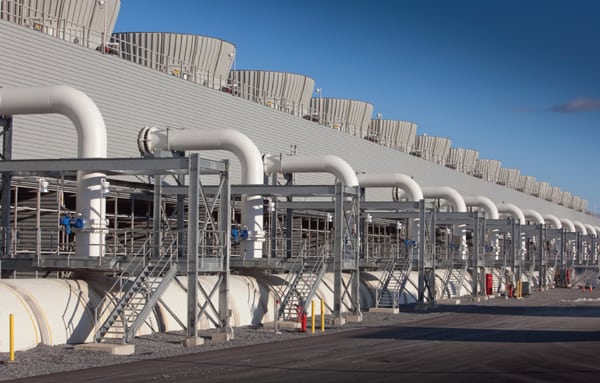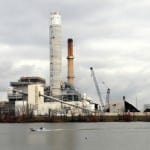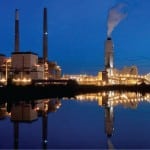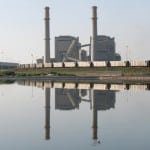Owner/operator: PPL
The 1,456-MW Brunner Island coal-fired plant has implemented advanced environmental improvements in order to be a good neighbor to the residents of south central Pennsylvania. For example, between 2006 and 2010, PPL invested more than $860 million in pollution control upgrades for air, water, and solid waste treatment at the facility.
PPL’s Brunner Island power plant has been operating for 45 years in York County and values being a responsible supporter of the local community. The plant is located along the Susquehanna River near the town of York Haven. Each year the facility generates enough electricity to power more than 1 million homes in the region.
Besides adding extensive environmental technology upgrades to improve local air and water quality, the facility has also demonstrated its commitment to being a good neighbor by providing recreational opportunities to nearby residents. Fishing, hiking, and boating are popular in the area surrounding the power plant. PPL also encourages its employees to dedicate their time to volunteer efforts.
Plant Overview
Brunner Island Unit 1 began commercial operation in 1961, Unit 2 followed in 1965, and Unit 3 came online in 1969. Plant Manager Steven Marbaise provided the following information about the facility’s current operations:
- Total plant capacity: 1,546 MW gross/ 1,427 MW net
- Overall efficiency rate: approximately 36% on an HHV basis
- Megawatt-hours generated per year: approximately 13,500,000 gross/12,461,000 net (approximately 80% capacity factor)
- Outage rate: about 7% to 13% (combined planned and unplanned)
- Equivalent availability factor: approximately 87% to 93%
Currently, the plant has approximately 250 full-time employees, a figure that is adjusted for seasonal workload. In addition, there are considerably more workers at the plant during maintenance outages.
Innovative Cooling Towers
Operators at the Brunner Island power plant began using new state-of-the-art cooling towers in April 2010, Marbaise explained. The towers, which cost approximately $100 million, are among the largest forced-draft cooling towers in the world and will help the plant protect aquatic life by reducing the temperature of water discharges to the Susquehanna River (Figure 1).
 |
| 1. Cool operator. Completed at the end of 2009, the cooling towers at PPL’s Brunner Island power plant are among the largest forced-draft cooling towers in the world and will help the facility protect aquatic life by reducing the temperature of its water discharges to the Susquehanna River. Courtesy: PPL |
“PPL operates its plants in an environmentally responsible manner,” said Marbaise. “The cooling towers will ensure the plant minimizes its impact on the environment by reducing the temperature of the water discharged into the Susquehanna River from spring through fall, when it can have the most benefit for aquatic life.”
Plant operators will use the cooling towers during the warmest nine months of the year, from March through November in subsequent years. The towers will reduce temperature increases during those months when river levels are lower and water temperature is naturally higher.
From December through February, the warm water discharge from the plant has no adverse impacts on aquatic life. In fact, discharge of warm water into the river during the winter creates a popular winter fishery at Brunner Island.
The cooling towers have four large vertical pumps operated by 3,500-horsepower motors. The pumps deliver more than a half million gallons of water through 34 cooling cells every minute. Each cell has a fan that can be operated from digital displays in the plant’s control room. Operators can adjust the speed and number of fans running based on the amount of water being discharged from the plant to maintain a desired discharge temperature.
New Flue Gas Desulfurization Systems
In addition to the cooling towers, PPL recently installed wet limestone forced oxidation flue gas desulfurization (FGD) systems to treat flue gas from the plant’s three generating units. A single absorber system treats the combined flue gas from Units 1 and 2 while a dedicated absorber system treats flue gas from Unit 3.
Installed by The Shaw Group (Shaw), both absorbers are the dual-flow single-tray design from Siemens Environmental Systems and Services (formerly Wheelabrator). Both absorbers consist of Stebbins Semplate tile-lined concrete vessels, with C-276 metal internals and fiberglass spray headers. Each absorber has five spray levels. Both absorbers discharge into a common 600-foot-tall concrete chimney containing dedicated fiberglass-reinforced plastic flues, each approximately 30 feet in diameter. The absorbers themselves have an inside diameter of 66 feet and an 82-foot-diameter reaction tank at the bottom.
The absorbers are designed for a maximum chloride concentration of 30,000 ppm. Each absorber is designed to remove up to 97% of incoming sulfur dioxide, depending on the number of spray levels in operation and the coal’s sulfur content. The forced oxidation—along with some limitations on limestone characteristics—allows the absorbers to produce wallboard-grade gypsum.
“The installation of these systems was very challenging due to the limited area available,” said Marbaise. “Virtually all of the new facilities were constructed on old, retired ash basins. Of note, the storage area for limestone and gypsum is outside the plant proper, on top of a separate ash basin, on which the rail yard and truck loading/unloading also are located. Conveyors cross the public road to carry the limestone and gypsum.”
Electrostatic Precipitator Retrofit
The Brunner Island Unit 3 electrostatic precipitator (ESP) replacement project involved the installation of new inlet fields by Hamon-Research Cottrell on the existing Lodge-Cottrell precipitators and demolition of existing wire plate precipitators. The work was accomplished by erecting the new ESP inlet fields as a separate structure adjacent to the existing C and D precipitators on Unit 3 ESPs.
During the tie-in outage that was done during a normal boiler overhaul, inlet nozzles on the 3C and 3D ESPs were removed, and the new fields were moved into place using heavy lift equipment and specially designed dollies. In addition, the existing 3A and 3B precipitators and associated chevron were completely removed, and a new air heater outlet duct was installed. At the same time, most of the balance-of-plant services that fed the demolished ESP were also removed. During the outage, the new ESP fields were tied to the inlet ductwork, and the remaining ESP chambers and balance of the utilities were reestablished, completing the new installation within the planned outage window.
In addition to executing its engineering, procurement, and construction contract for the FGD retrofit, Shaw provided engineering services for the Unit 2 ESP retrofit.
“The Unit 2 ESP replacement project was more complicated in scope and complexity than the Unit 3 work,” said William Gibson, project manager of Shaw’s retrofit project at the facility. “The area behind the Brunner Island Unit 2 boiler had two existing weighted-wire ESPs in a piggy-back configuration and is physically bounded by Units 1 and 3, the existing boiler, other structures at grade, and the new FGD ductwork.”
The need to maintain access to the other boilers and access to open areas for outage activities severely limited the available footprint for a new ESP and for construction while the unit was in operation. The project team picked the only realistically available location: a footprint 50 feet above grade, behind the existing induced draft fans and elevated above the building that supplies power to the ESPs and baghouse on Units 1 and 3. Once installed, the newly configured ESP was designed to meet all applicable emissions limits with multiple fields out of service.
Making Safety a Priority
PPL’s Brunner Island power plant achieved “Star” certification in the U.S. Occupational Safety and Health Administration’s Voluntary Protection Program (VPP) in March 2003. The plant was recertified in June 2006. The VPP program recognizes companies that go beyond compliance to protect worker health and safety. The VPP Star certification is the highest safety recognition given within the program.
“At Brunner Island, our commitment to safety is evident not only in the VPP recognition but in the everyday performance of our employees,” Marbaise said.
The plant hosts a safety fair at the start of each major outage to which all plant personnel are invited, given lunch, and encouraged to stop at the various stations that feature games with safety themes or information about new personal safety equipment or particular safety themes.
— Angela Neville, JD, is POWER’s senior editor.










